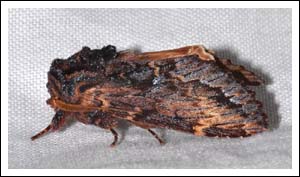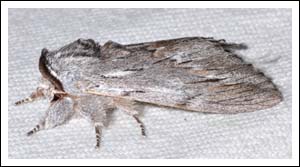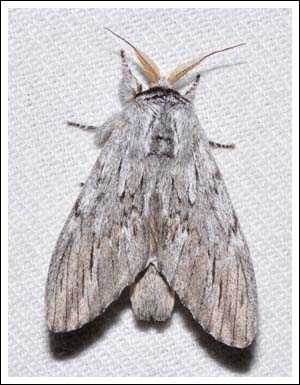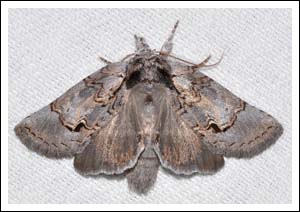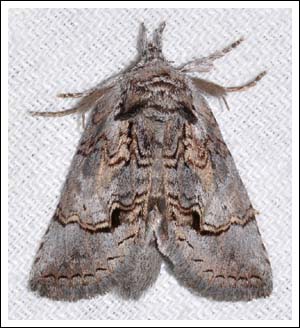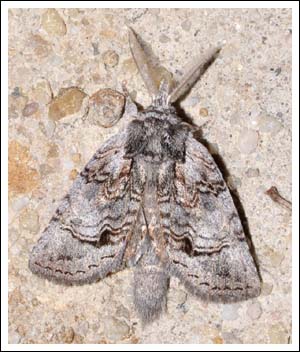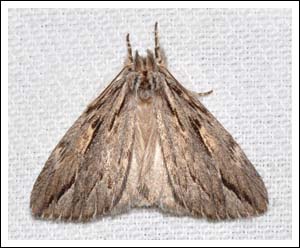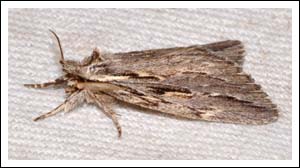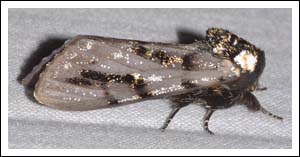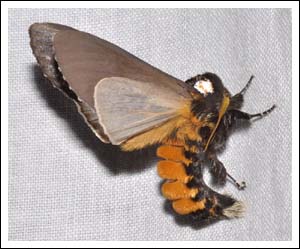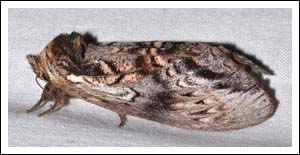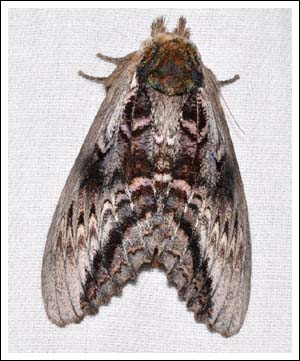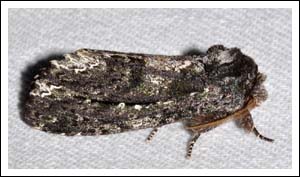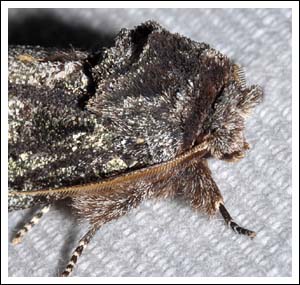The subfamily Notodontinae has a larger number of genera than the Thaumetopoeinae, larvae of this group are not hairy but can come in a variety of strange shapes. Seven species have come to the light locally. the most common being the Two-coloured Notodontid, Sorama bicolor.
Also relatively common is the Streaked Notodontid, Destolmia lineata, this is a variable moth and more than one species may be involved. (MOV2). The larvae of both these species feed on eucalypts.
The Patterned Gallaba, Gallaba eugraphes is a most attractive moth and always a delight to see at the sheet, it flies from October to April. Both the male and female have pectinate antennae, with the male’s much broader.
The Eastern Notodontid, Ecnomodes sagittaria is a moth that is distinguished from Ecnomodes sp(1), (MOV2), by the breadth of its antennae. Male and female moths came to the light at Valencia Creek East in September 2015.
Female.
Male.
Male.
Psalidostetha banksiae, the Banksia Moth is quite beautiful, and has the habit of feigning death if handled. The larval food plants come from the Proteaceae family, Banksias, Hakeas, and Grevilleas for example. This moth was photographed in May 2013 at the Giffard Flora Reserve where there is plenty of Banksia serrata.
Playing dead.
The Gum Rough-head, Hylaeora eucalypti flies mainly in autumn, it is an impressive moth and several came to the light in tall forest in the foothills in April 2012. the common name is very apparent in the first image, females all. The attractive larvae feed on eucalypt foliage.
The final moth in this group is the Golden Notodontid, Neola semiaurata, named for obvious reasons. In January of this year several came to the light in box/ironbark country at Glenmaggie. The larvae of this moth feed on a variety of plants.
Click images to enlarge.
References and further reading,
P Marriott,
Moths of Victoria Vol. 2 2nd edition,
A Field Guide to Australian Moths,
Moths in Australia

